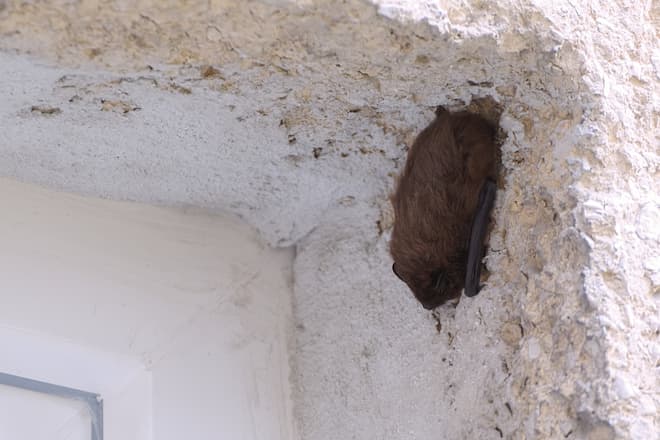Bats are incredibly fascinating animals that have busied the minds of many people throughout the centuries. They are very beneficial animals because of their insectivorous habits where they will eat invasive insects that are often a threat to crops and farmers alike. Their feces, called Bat Guano has been used for ages as a natural fertilizer and because it’s so easy to use and distribute. When stepped on, bat guano can turn into a fine powder.
If you notice that you have bats on your roof or anywhere, contact bat control specialists for fast removal.
Due to the nature f bats, these animals prefer to roost in often secluded, dark, and dry areas where they cannot be disturbed easily. In nature, these areas can include but are not limited to caves, caverns, rock fissures to human-made structures like mineshafts and storage facilities. Bats are quite particular with their roosting places, so if a bat takes a liking to a particular place, chances are that it will stay there for the season. Bats in the urban landscape will take any place that is sheltered, dry, and dark.
Of course, this means any place where they will not be disturbed. As a result, since the attic happens to be in their flight path, many bats will choose to stay in the attic. They are incredibly and can even wrangle themselves in small holes the size of a quarter. They will take advantage of any kind of space where they have good and easy access to the roof. Bats are nocturnal animals which means they will be active at night and will return in the early morning. These are the spaces where bats often frequent but are not limited to these spaces.
- Attics
- Chimney
- Eaves
- Rafters
So how do you get rid of them from your roof? Unfortunately, this is best left to professionals who have the qualifications to work at heights and have the necessary tools to do the job safely. Furthermore, removing bats is not as straightforward as many think. Since many bats are protected wildlife, they cannot be legally removed during a certain period. This is during their maternity season, during inclement weather, or in extreme cold. This is because many of these bats are dwindling in numbers rapidly due to a fungal disease called the White-Nose Syndrome (WNS) This devastating syndrome was first observed by researchers in 2006. There is no known cure for it now.
If you do have the resources, putting up lights can deter bats from coming there, but this can be an expensive investment. Instead, you can hire bat control specialists that can make them go away and can also make sure that they will never come back with preventive measures.
